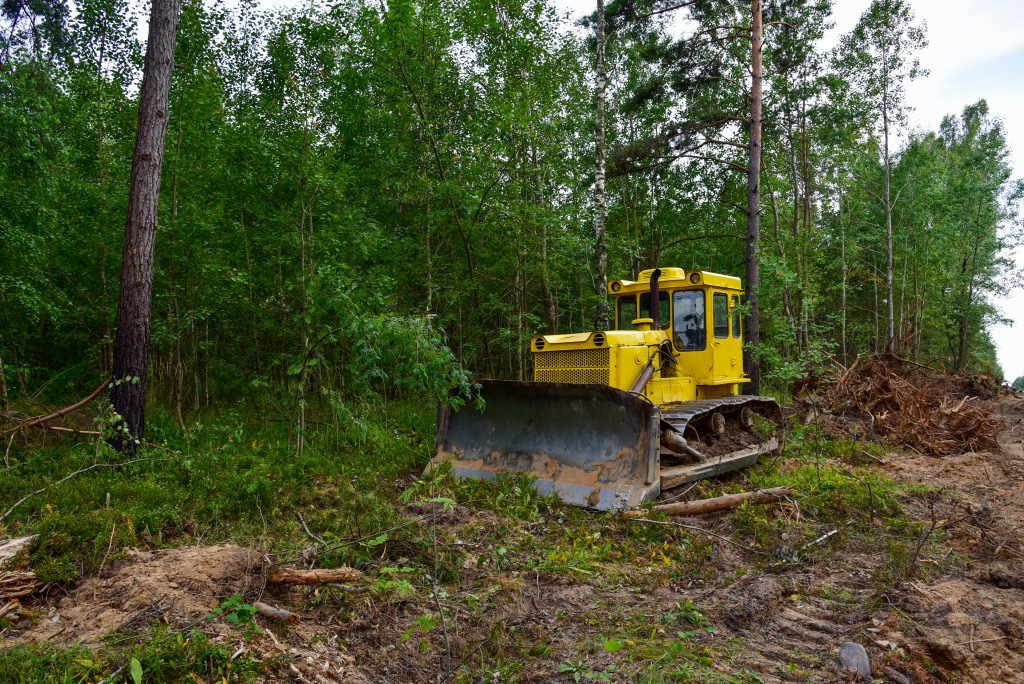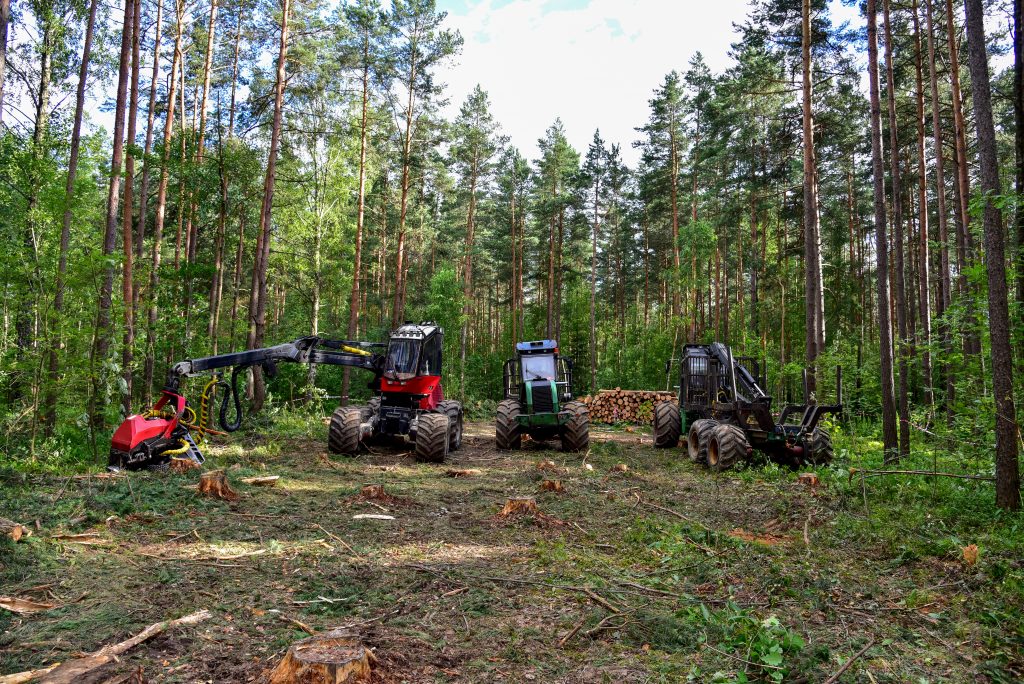Questions to Ask a Consulting Forester
You took the plunge and decided to enter the recreational land owner game. Regardless of whether you have a 40-acre homestead, a couple of hundred acres or an even larger tract, your property represents an asset that can pay you dividends beyond its recreational value.
The question is where do you start to find out what you have and how to manage it for maximum return. Should you manage it for income generating timber? If so, what type of timber harvest should you do, clear-cutting or selective forest thinning? What type of timber do you have? Is it saw timber, pulp wood or chip n saw? Is it in your best interest just to leave that timber “on the stump” to enhance the property’s resale value? The solution to these and other land related questions is to find and retain a consulting forester.
Before we “dive into the woods” it is important to know that there are three types of foresters. Public service foresters typically work for county and state governments or college extension services to assist woodland owners. There are also industry or “procurement” foresters who are employed by timber or forest product companies.
Then there are consulting foresters. The easiest way, from a textbook definition perspective, is to think of a consultant as an independent forester whose services are available to the public and who doesn’t work for a timber buying business. A consulting forester may work full or even part-time with the purpose of helping a woodland owner manage his resource in the best possible way depending on his objectives. That may entail working on habitat improvement projects, helping and managing timber resources and helping an owner get done what he wants to do but is outside of his capabilities. In actuality, a commercial forester is a partner just like your accountant or attorney.
To find out what you need to know about consulting foresters and the proper questions to ask in order to find the right forester for you I interviewed Denson Helms, a licensed consulting forester and an appraiser for First South Farm Credit with 16 offices in Alabama.
By being both a forester and an appraiser, Helms can take a look at woodlands and evaluate what is there from a forestry and management perspective and then putting on his appraiser hat, he can compare that property to others on the market to come up with a value.

Consulting Foresters can help you with habitat projects such as establishing fire breaks on your land.
Helms points out that the very first step in hiring a consulting forester is to make sure that they are registered and licensed in your state.
“If you’re in Alabama and there is any question you can go to the Alabama State Board of Registration for Foresters and check by county to see if his name is there,” Helms said.
According to Helms, one of the major ways that a consulting forester can provide value for a landowner is orchestrating the timber harvesting process.
“Once the forester and owner get together on determining what timber is to be cut, they will do a ‘timber cruise’ and get an estimated value of what should come out so you know what you want to cut and the boundaries. Then, through the timber sale process, a consultant forester should either negotiate the timber price or put it out on a bid sale to get you the best price for your timber, verses dealing with one procurement forester or logging crew. A consulting forester with his knowledge and experience in the market will have those multiple contacts to get you the highest value for your timber products,” Helms said.
In effect, a property owner and consulting forester are partners. The owner needs to share exactly what he wants from the property and what his long- and short-term goals are if he wants to get the maximum benefit from a forester’s expertise The dialogue has to be honest, open and if the objectives of the owner aren’t realistic then it is the responsibility of the consultant to be upfront and honest and let them know it isn’t workable.
“The forester needs to know what the owner is going to use the property for. Is it just an investment, is it just recreation and hunting or is it both,” Hines pointed out. “The consultant needs to be able to advise the owner if his plans or goals aren’t realistic and maybe they should back up and look at other options. There has to be open communication in respect to issues such as whether it is the right time to cut not only in terms of the market and demand, but also as far as the health of the timber stand. It is a fluid thing and they need to keep their options open and be talking about them on a regular basis”
It is key to remember that when you hire a commercial forester, just like when you retain a real estate or land professional, that you are paying for their experience and expertise. You may be looking one way at your property but a forester brings a different perspective to the table, something you may never have considered and could change the whole game plan.
For example, if your goal is strictly to make as much money as possible off the property, you may be thinking all about timber, as in “when can I cut?”, “how much should I cut?” and “what should I cut?”. On the other hand, a forester may take a look at the property, the property’s assets, the actual amount of acreage, the characteristics of the surrounding property and tell you that your money-making bonanza is best served by leaving it as a recreational property and developing the aesthetics instead of just cutting down timber.

Sometimes leaving your timber alone and maintaining your property as recreational land is the best, money making option.
How do you know which commercial forester is the right commercial forester? Hines says that there are some basic questions that you can ask to establish credibility. He emphasizes that some of the information you receive needs to be specifically evaluated. For example, a forester who specializes in smaller parcels may have a lot of clients where as one who works with large land concerns may only have a few.
“I would ask some simple questions such as ‘how many clients do you have?’, ‘how many acres do you manage?’, ‘how many foresters work with you on your team and what is their experience?’,” Hines said. “Some foresters may have 100 clients but they may not have many acres in total and some may just a handful of clients, but they have a whole lot of acres. It really is an intro to a conversation to find out what kind of person they are and their strong points.”
According to Hines, it is a good idea to find out if the consulting forester has experience managing property similar to what you own and ask them if they have some properties that they manage that you could go see their level of management. It gives you an idea of what they have done and gives you an idea of what can be done and what they can do for you. He also said that it doesn’t hurt to find out how active and up-to-date the forester is regarding the local market.
“I’d ask questions like, ‘When was the last time you sold some timber?’ or ‘How many active timber sales do you have’ and that can segway into what kind of prices they are seeing,” Hines said. “The more timber sales they have the more active they are in the market.”
On a different note, but equally important, it is in your best interest to find out what kind of subcontractors the forester uses, as in loggers, tree planters, anybody involved with burning, spraying, road clearing and to make sure that the forester has some sort of umbrella liability policy and the subcontractors have liability insurance.
Once you have made the decision to do some forest thinning or timber harvesting on your property it is critical to establish baseline data of your timber inventory. Hines explained that a good timber inventory will have a volume by stand and by product. When you get it down that specifically, a timber cruise may be good for a few years before it needs to be repeated and it allows you to estimate, by product and volume, and depending on the market conditions and the timing an idea as to what your standing timber value is.
A timber cruise is the process of measuring forest stands to determine stand characteristics, such as species, average tree sizes, age, volume, and quality. The primary purpose of cruising is to obtain a volume estimation to appraise and prepare timber sales. You enter that data into a computer program and after it dices and slices, it allows you can get as specific as you want.
“It is just like any statistical sample in that the more plots you plug in the more accurate it is going to be and a lot depends on how diverse your property is. If it’s monocultural, like a 30-year-old pine plantation and you have 100 acres of the same type, size of trees, then a very intensive cruise might not be needed,” Hines said.
How to Pay and How to Play
Everything is in place to go forward on doing some timber harvesting and two of the big final questions in the process is how do you pay for all of this, how do you keep track of what you had cut and going forward.

Overseeing the timber harvest is one of the most important aspects of a consultant foresters job.
“The fee is really going to be specific to the size of the property. Some are on a commission-based structure, some do it by the hour and others do it by a management fee,” Hines said. “If you have a large tract, you may lean on your forester regularly so that may mean some kind of contract for all of the services. For a smaller piece of property for just a timber sale is generally commission based but that depends on your management goals and services you want.”
In terms of oversight, if you are having a pine plantation cut, where everything is the same size and the age, the loggers aren’t going to be sorting much since it is all pulpwood and you may not even have to go out and check. If you have a more diverse parcel which entails more sorting of wood types, then you want to keep track on a regular basis, maybe three times a week to make sure that there is “wood security”
That means having a load tag on every truck delivering your wood to the mill, load by load and the receipt of a scale ticket to be reconciled with load sheets just to make sure that everything is on the up and up.
“I think a consulting forester should be working for the landowner’s best interest and trying to maximize the income and future return for that landowner,” Hines concluded. “I think that a consulting forester can add value to the landowner’s property by reducing the risk of loss along with timber and land damage from some kind of process being done unsupervised by a professional who knows what to look for. His efforts can possibly create a great return on that same asset that may have been mismanaged in the past.”
Source:
First South Farm Credit
